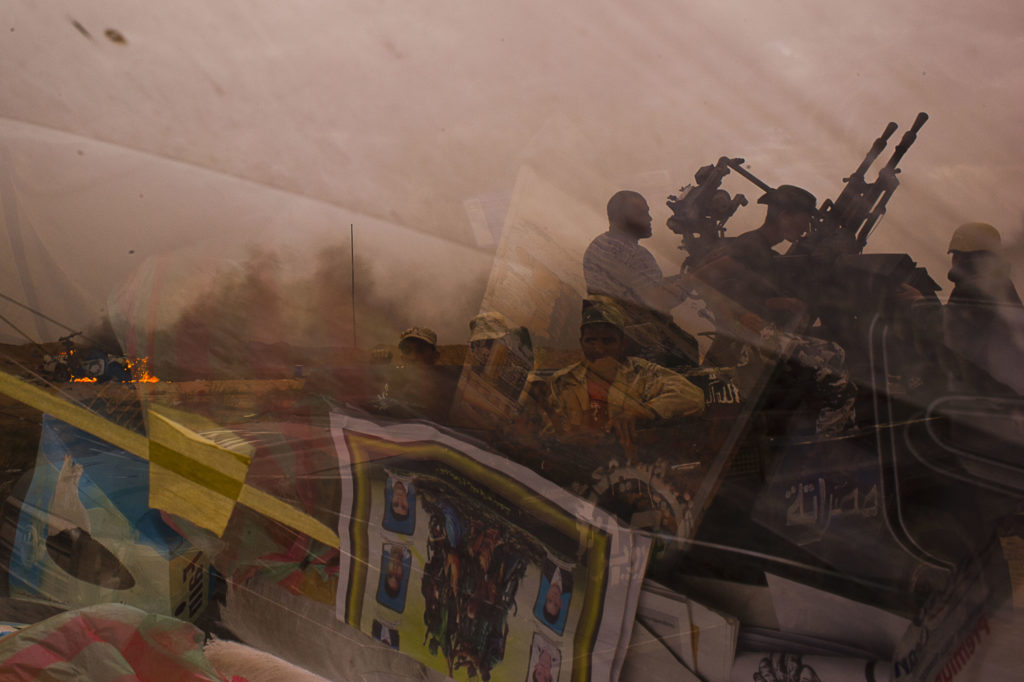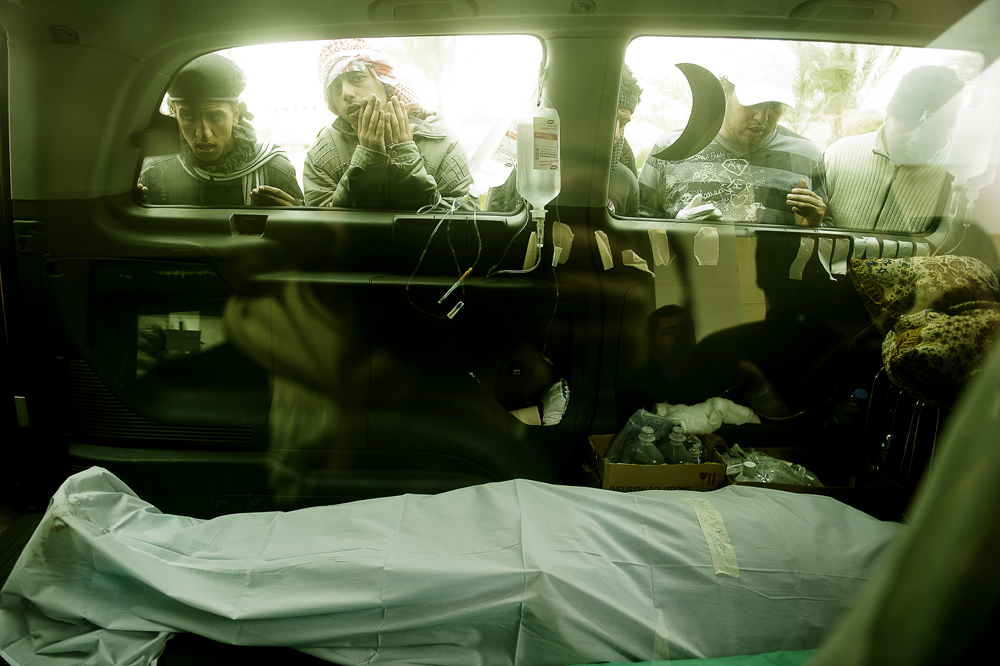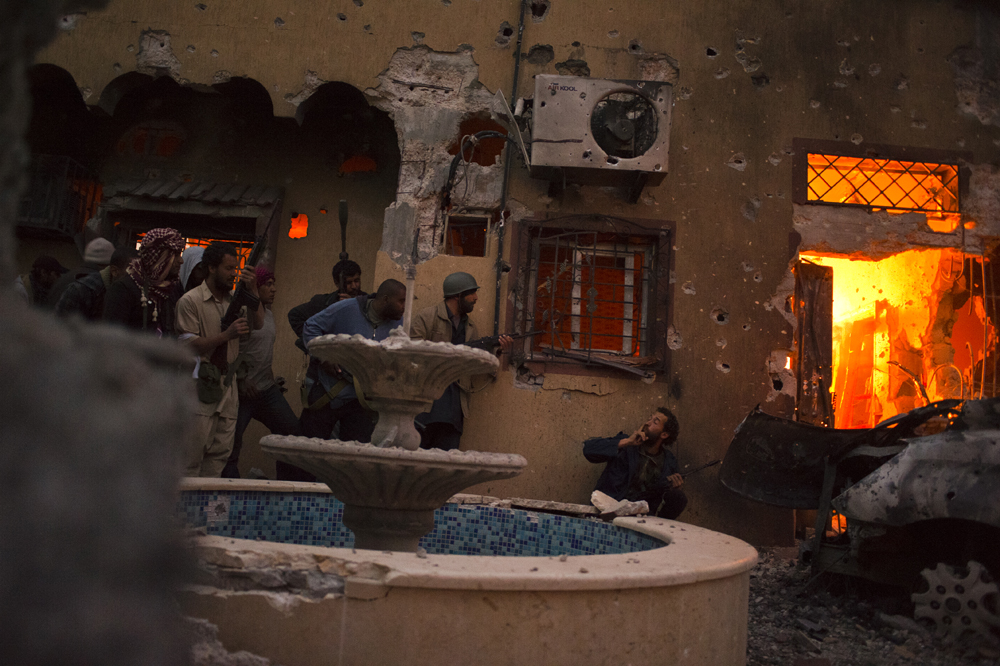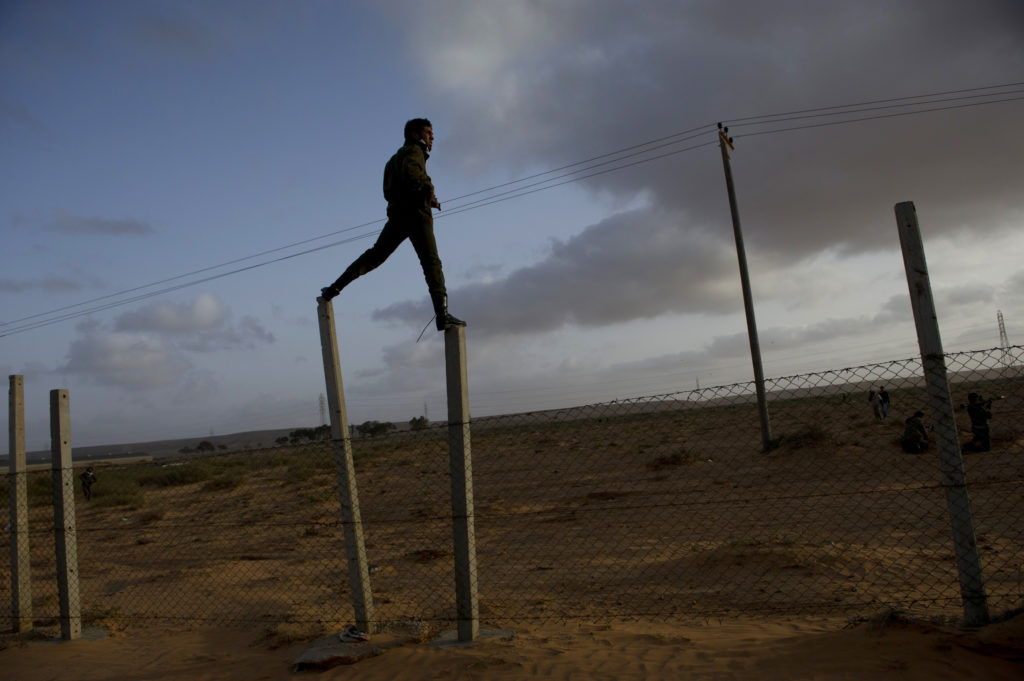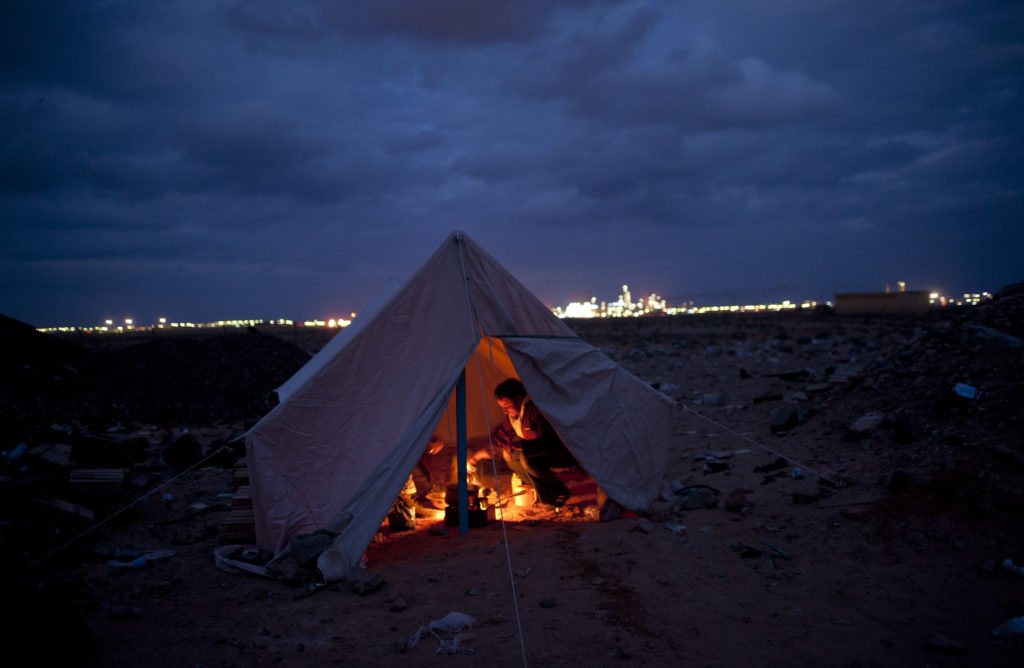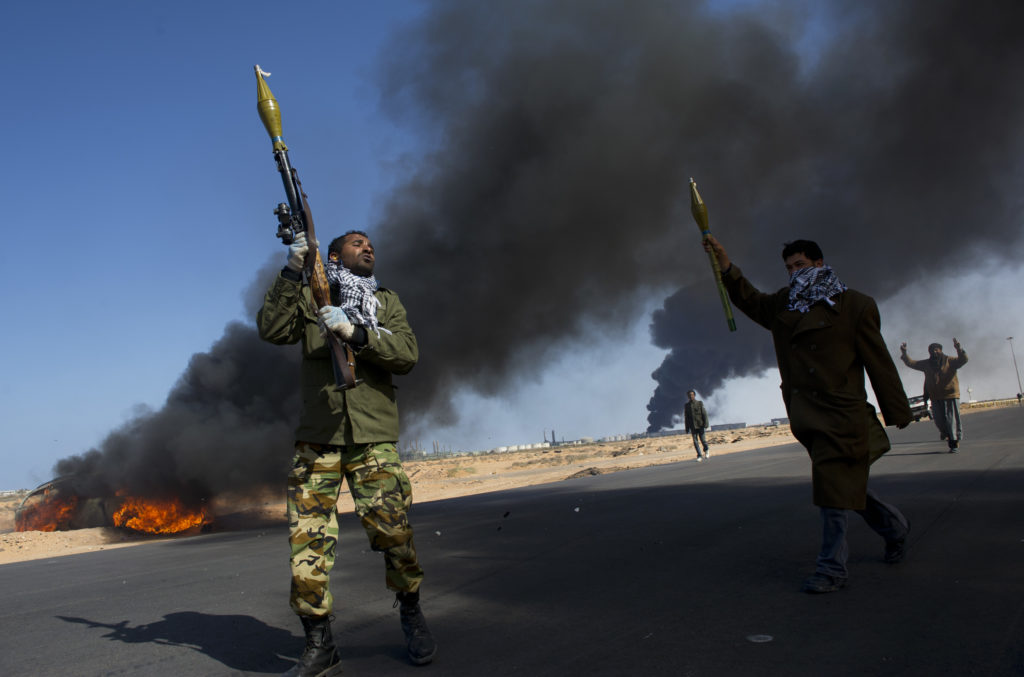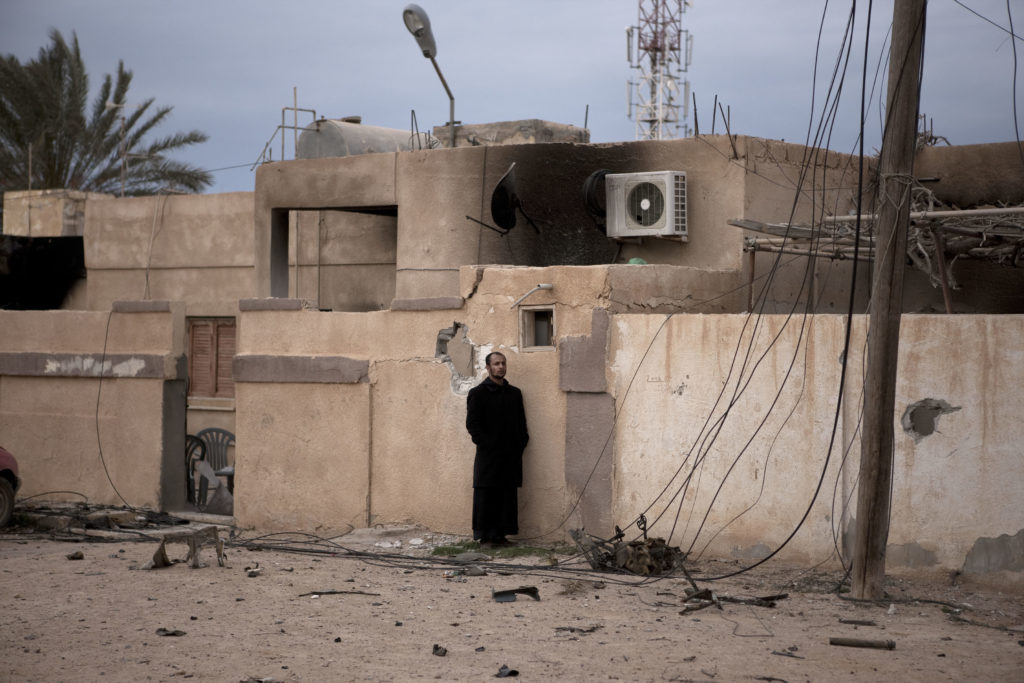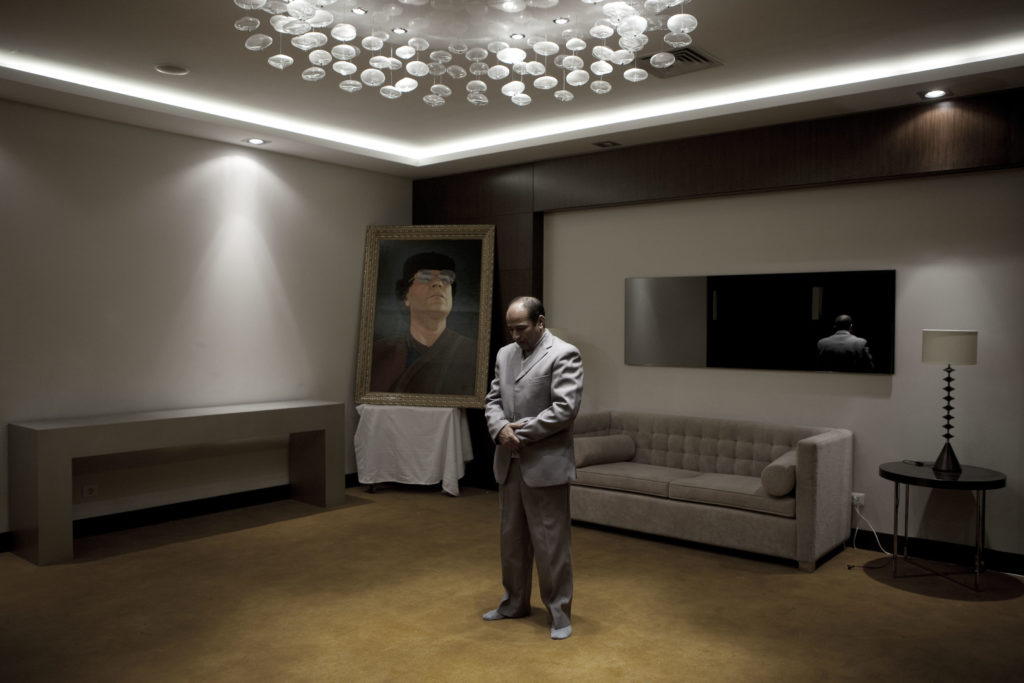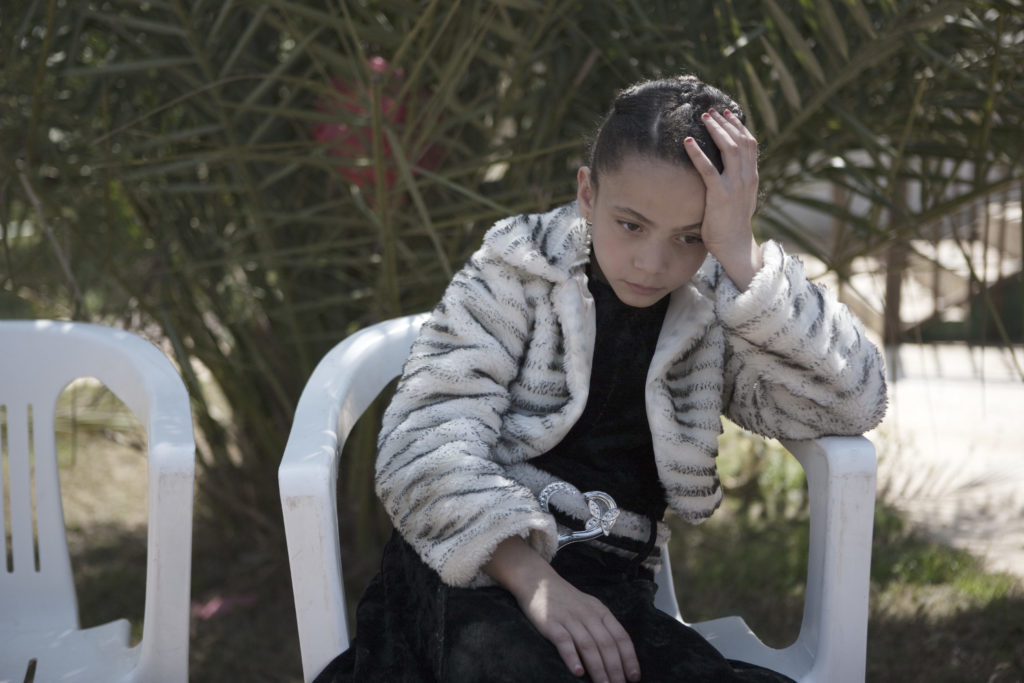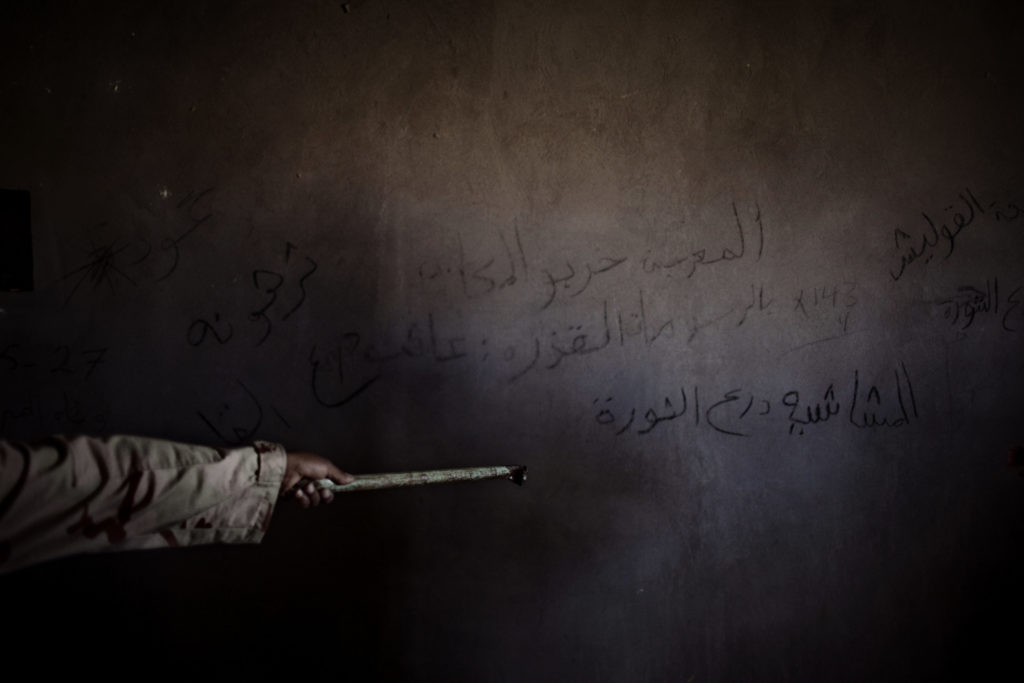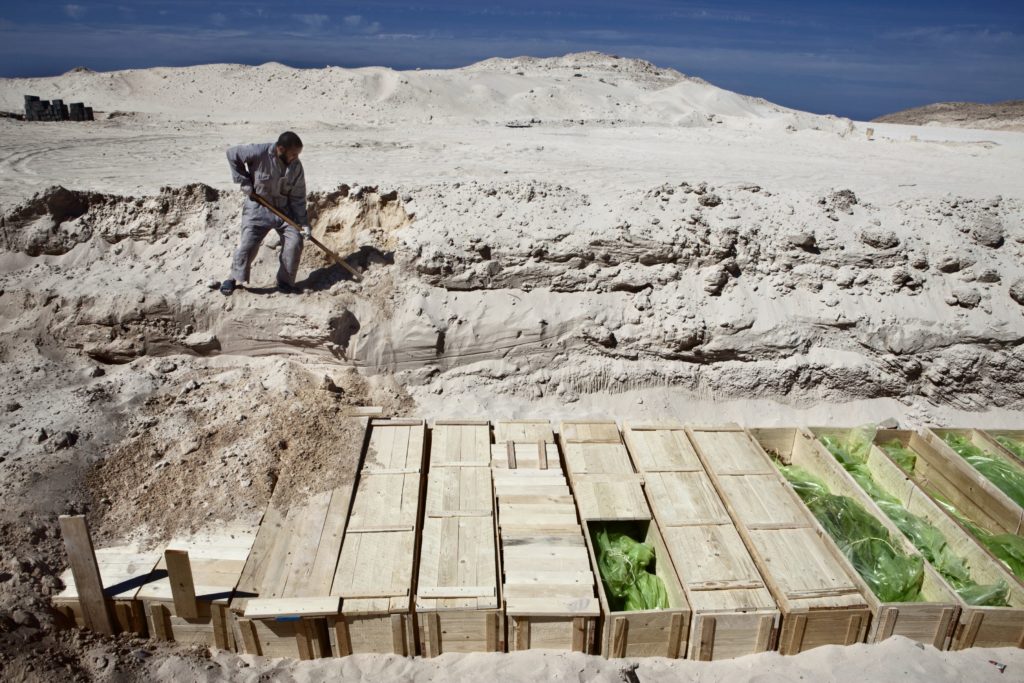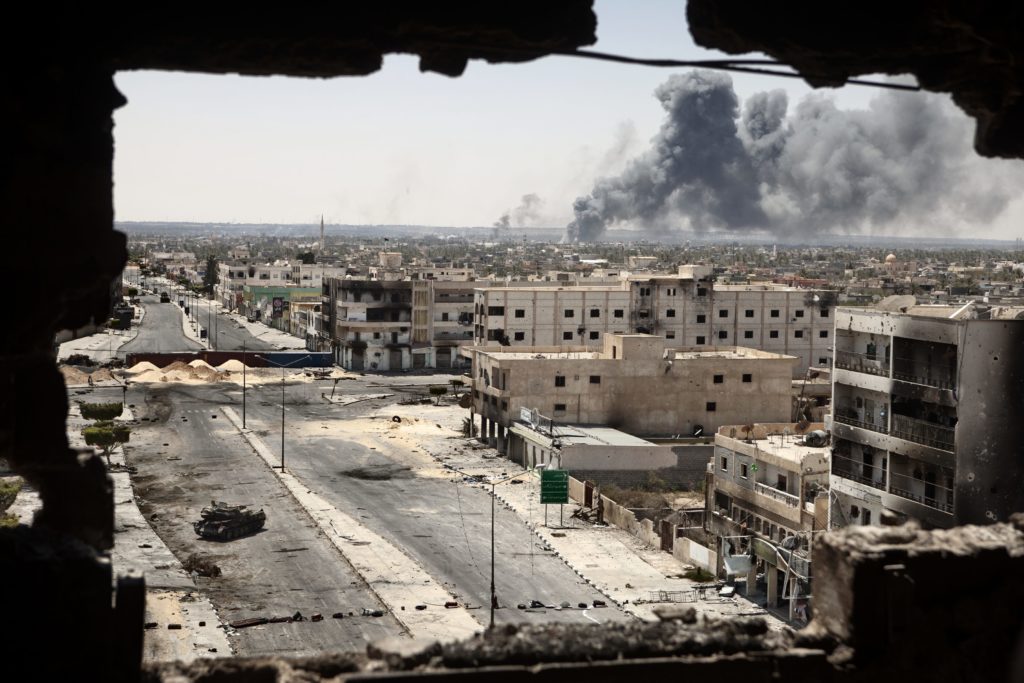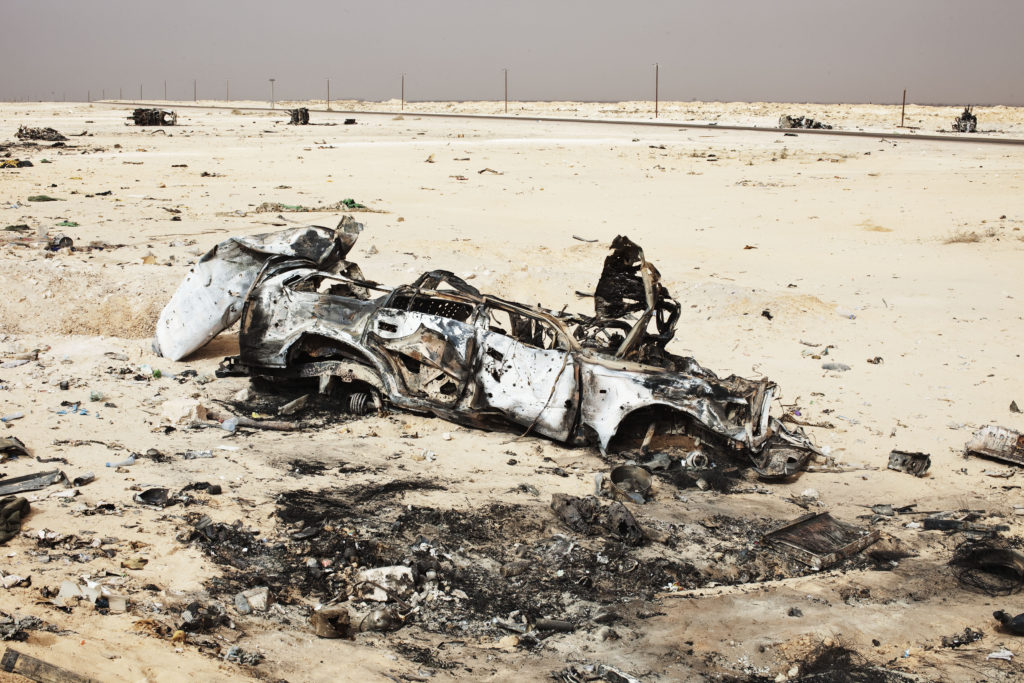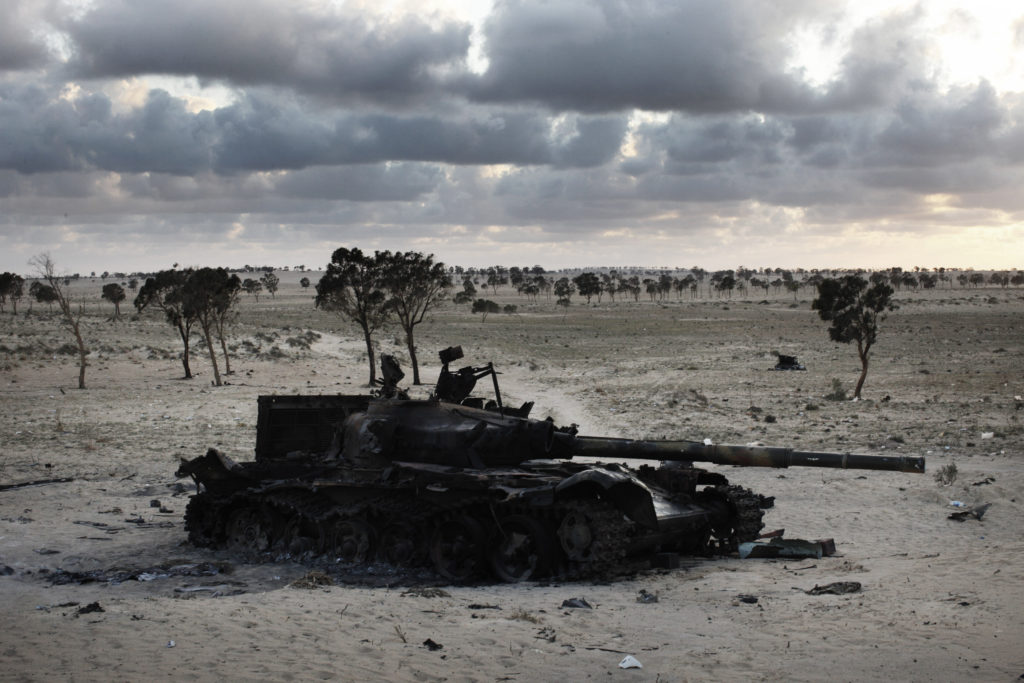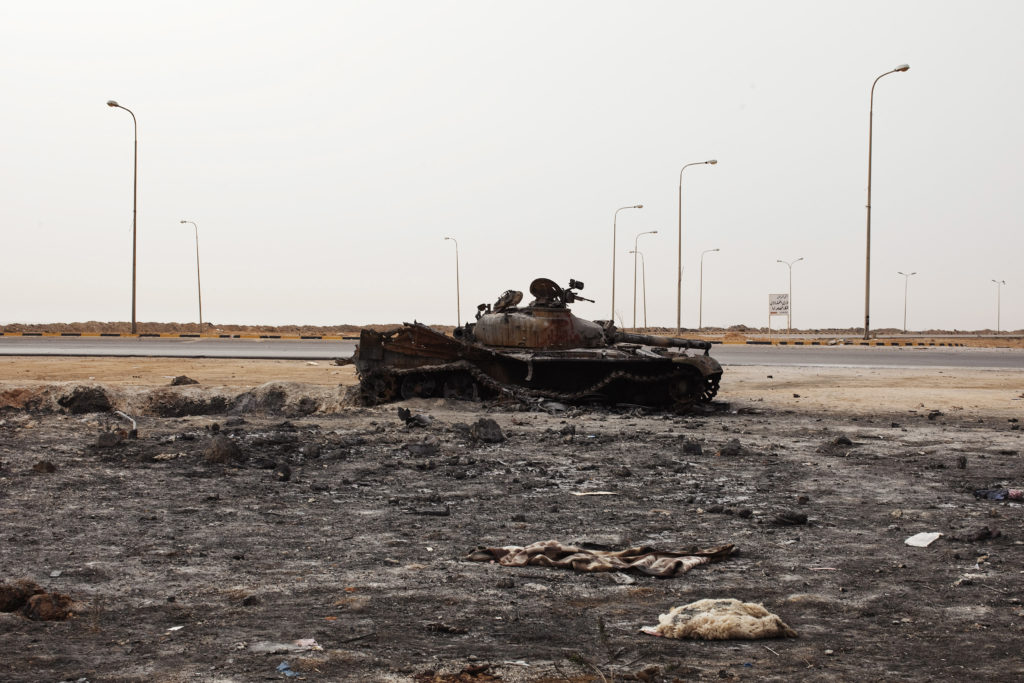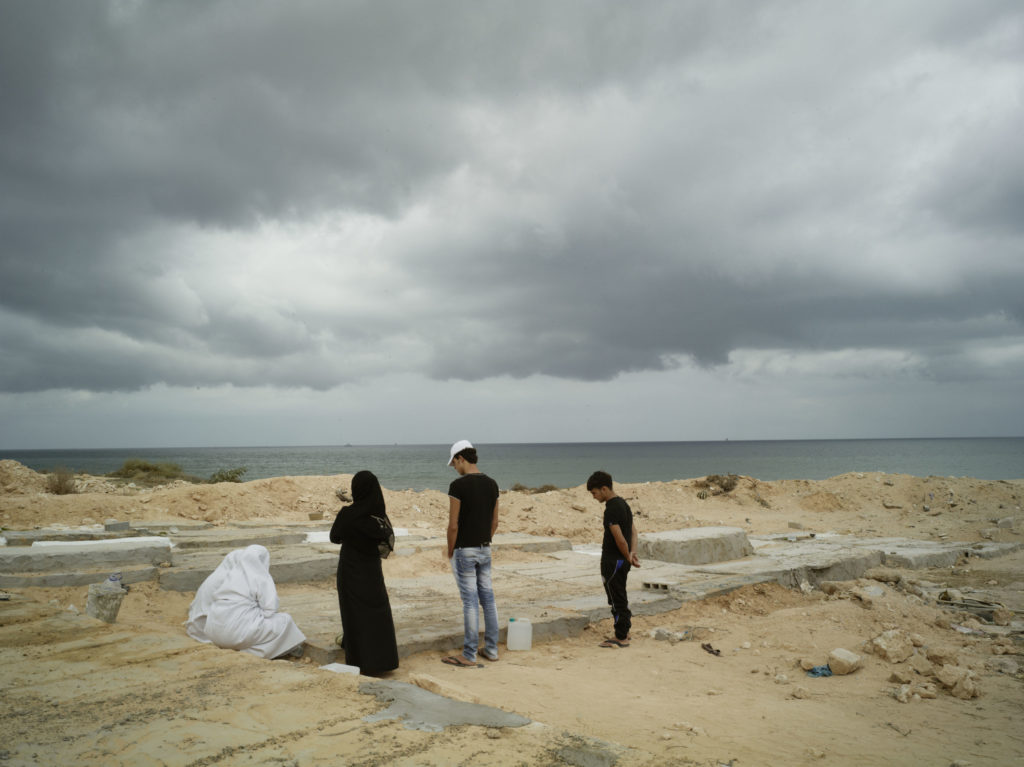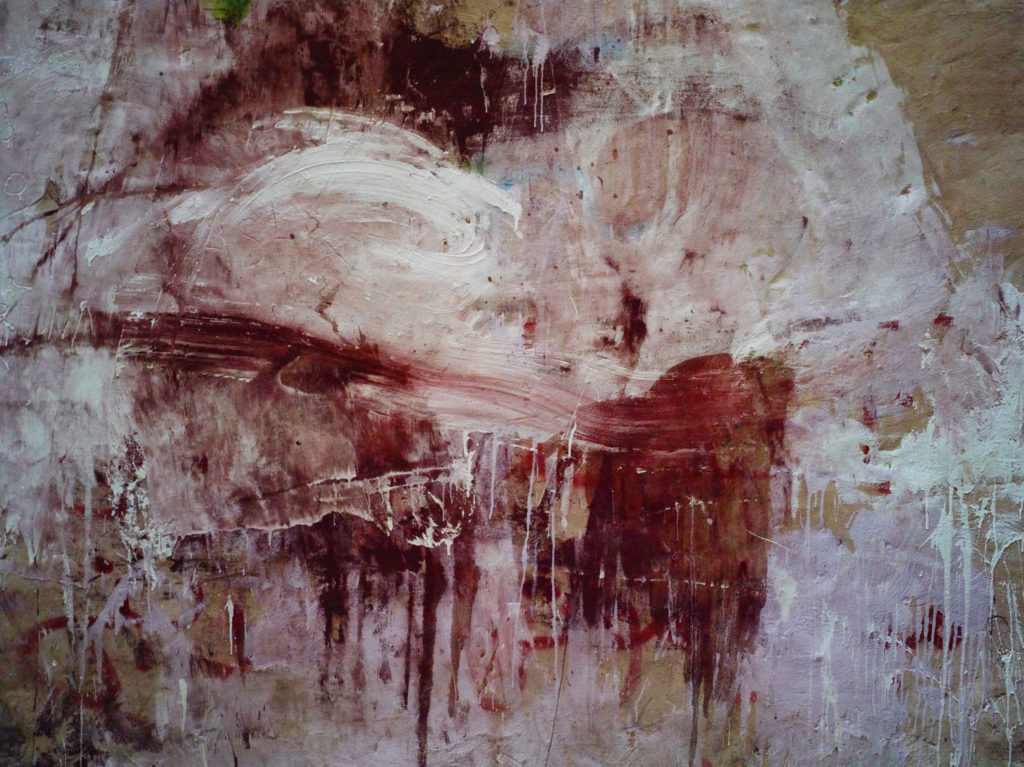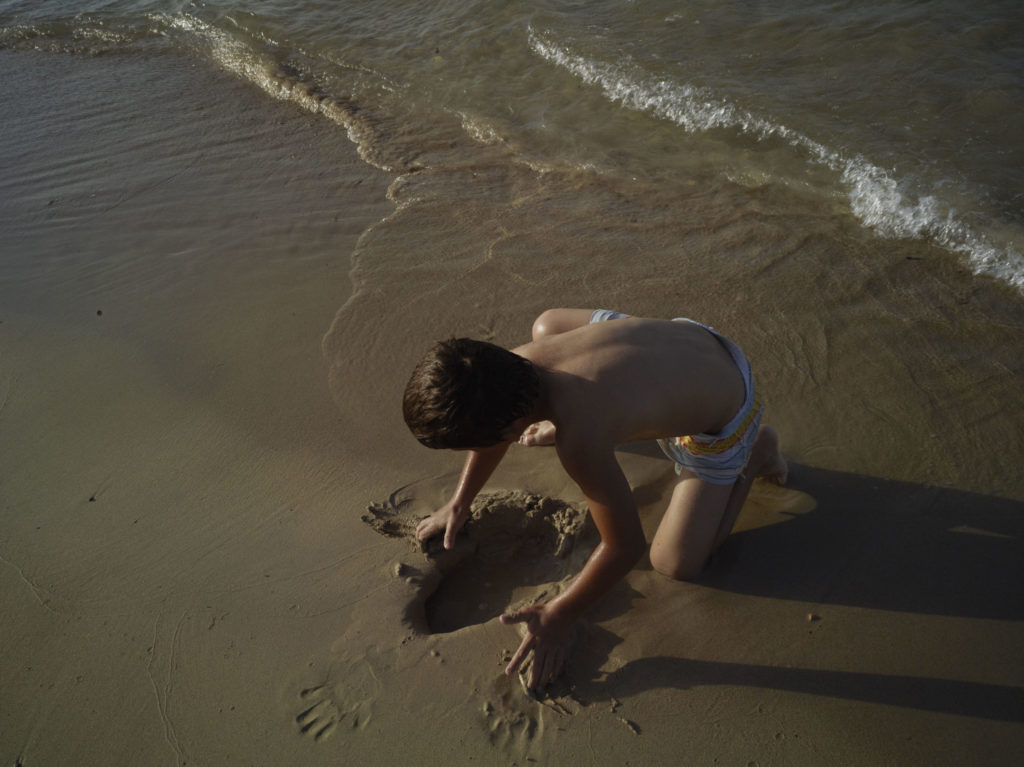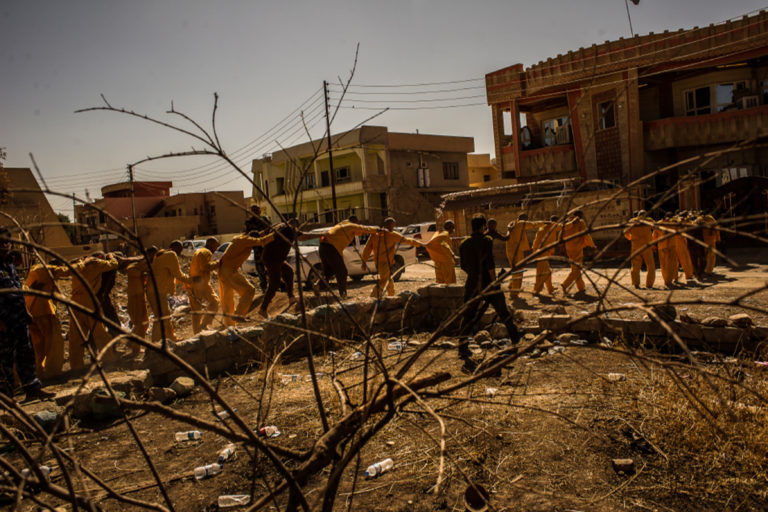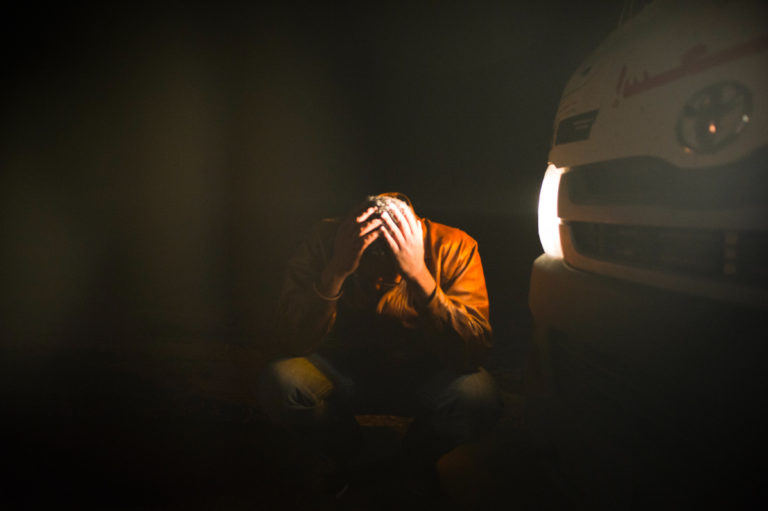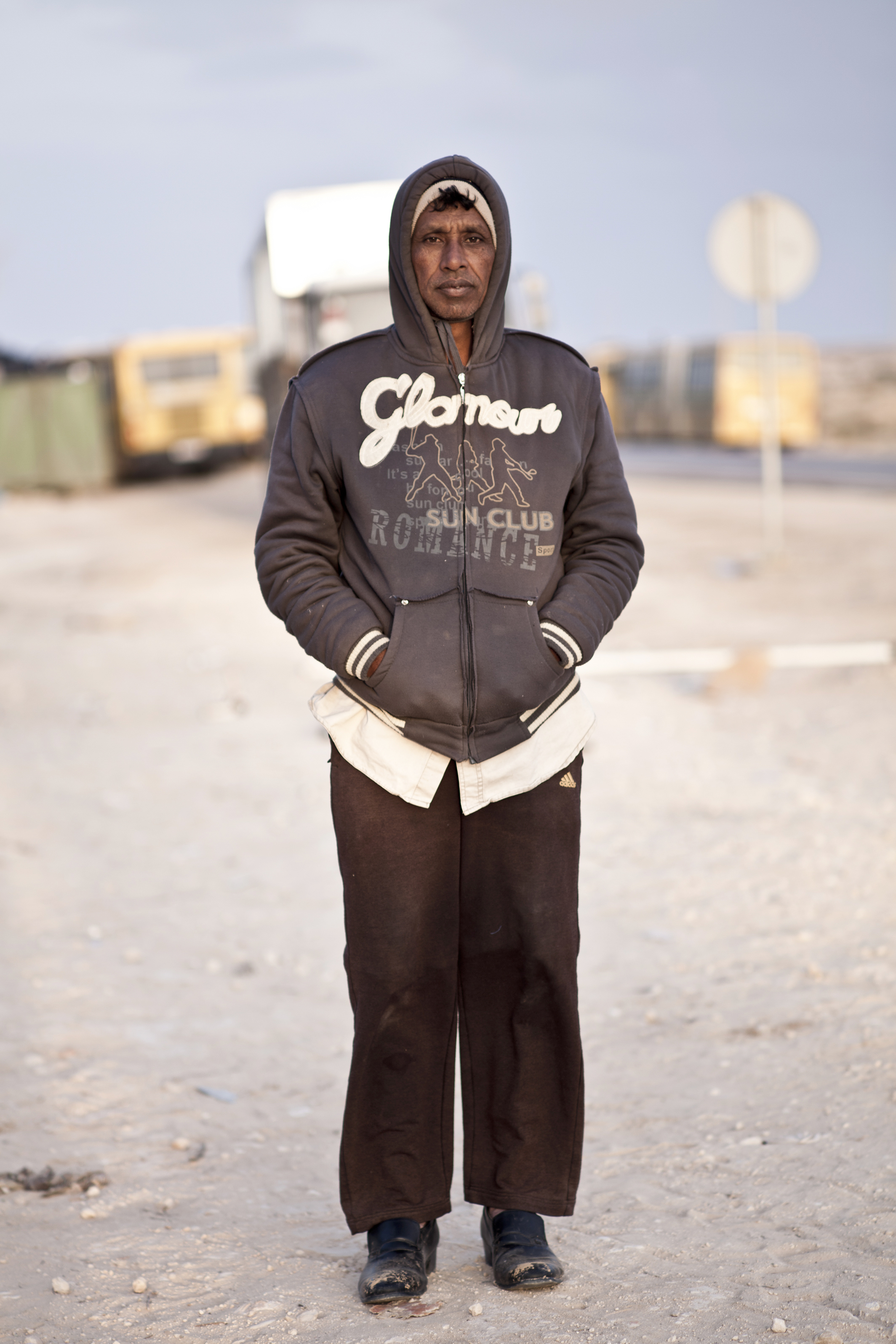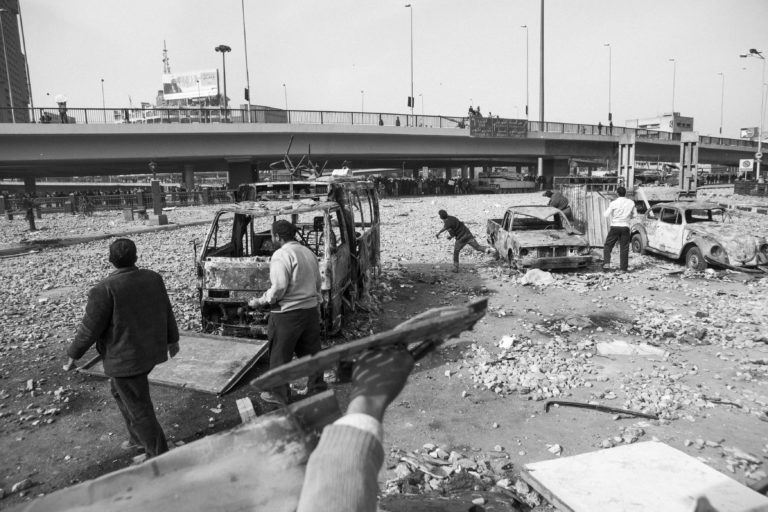We have been several times and for long periods in Libya during the conflict. We have seen battles, death, destruction, suffering: a war.
Today we hope in a free Libya, self-determined, independent, master of its own destiny. We do not want to forget the sufferings that we have photographed and we hope that everyone could remember what’s happened, as a memory of the facts and as a basis for what there will be: as a Bridge for Reconciliation, so that the suffering of everyone did not happen in vain.
IN 2012 EIGHT PHOTOJOURNALISTS SUGGESTED DOCUMENTARY PHOTOGRAPHY AS A POSSIBLE BRIDGE FOR RECONCILIATION
An original idea by André Liohn with: Lynsey Addario, Eric Bouvet, Bryan Denton, Christopher Morris, Jehad Nga, Finbarr O’reilly and the curatorship by Paolo Pellegrin and Annalisa D’Angelo.
BACKGROUND
On 15 February 2011, a small group of lawyers started a series of peaceful protests in the city of Benghazi reacting against the government’s decision to arrest the lawyer and human rights activist Fathi Terbil. The 42 years long dictatorship, headed by Col Muammar Gadafi reacted with violence against the local population and the protests rapidly escalated into an uprising that spread across the country, polarized in two main forces: the National Transitional Council, based in Benghazi organized to overthrow the Gadafi-led regime and hold democratic elections, and the Libyan Arab Jamahiriya forces loyal to Muammar Gadafi and his family.
The United Nations Security Council passed an initial resolution freezing the assets of Gadafi and ten members of his inner circle, and restricting their travel. The resolution also referred the actions of the government to the International Criminal Court for investigation, and an arrest warrant for Gadafi was issued on 27 June. This was followed by an arrest warrant issued by Interpol on 8 September.
In early March, Gadafi’s forces rallied, pushed eastwards and re-took several coastal cities before attacking Benghazi. A further U.N. resolution authorized member states to establish and enforce a no-fly zone over Libya.
In August, rebel forces engaged in a coastal offensive and took most of their lost territory, and captured the capital city of Tripoli, while Gadafi evaded capture and loyalists engaged in a rearguard campaign.
On September 8, Naji Barakat, the Health Minister of the National Transitional Council, stated that about 30,000 people were killed during the war. At least 50,000 war wounded, about 20,000 with serious injuries, were currently estimated, but this estimate was expected to rise. However, there was no independent verification of the opposition claim. On September 16, the UN recognized the National Transitional Council as the legal representative of the country and on 20 September, the African Union officially recognized the National Transitional Council as the legitimate representative of Libya.
The conflict ended in late October 2011 with the the death of Col. Muamar Gadafi and the fall of his two last strongholds, the cities of Sirte and Ban Walid.
RECONCILIATION
Political and social violence does not end with the last casualty. A common challenge facing all the aftermaths is the risk of manipulation of the civilians’ memory and perception.
This is the framework where the concept of Reconciliation is situated. It refers to the crucial process of healing societies by restoring dialogue and relationships. Reconciliation between people and ethnic groups has to build on the past while devising a shared vision for the future.
The formulation of a shared vision and understanding among the civilians in transitional societies is decisive for securing reconciliation and more broadly social regeneration.
The first months of aftermath are crucial for the country’s and its people stability and long term prosperity. Peace, individual liberty, reconstruction must be pursued together with security and disarmament. Reconciliation is necessary, combined with the settlement of all claims for justice by the victims of the war.
VISUAL COMMUNICATION: PHOTOJOURNALISM
Photography is a very valuable communication instrument because it is universally accessible and understood and it bridges socio-economic and linguistic barriers.
In the aftermath of a war, Photography can support people’s struggles in dealing with the painful past, in designing a shared vision of the future and in going beyond revenge and/or retaliation.
Photographs are witnesses of the broken relations and can contribute to the healing of societies.
As the photography critic and author Vicky Goldberg wrote in her The power of photography. How photographs changed our lives: “The fact that what is represented on paper undeniably existed, if only for a moment, is the ultimate source of the medium’s extraordinary powers of persuasion”.
Conflict Resolution matches Visual Communication.
There is an extensive literature on the subject and several best practices worldwide have demonstrated what Photography can do to support and enhance Reconciliation.
THE ADIL – ALMOST DAWN IN LIBYA PROJECT
ADIL is an Arabic name derived from the Arabic word “Adl” which means “fairness” and “justice”.
The ADIL project’s purpose is to contribute to the Reconciliation and Democracy Building processes for Libyan People facing the aftermath of the war. The core concept of the project is to use Visual Communication as a Bridge for Reconciliation.
In the period of transition “war-to-peace” photographs can help people to accept the past and to lay the foundations for the new civil and social contract.
The project comprises super partes collection and exhibition of Photographs by Photographers who lived the conflict “on the ground”, organized by sections and themes. This Photo exhibition offers a neutral arena where people will be invited to see and react to how independent eyes saw their reality.
An independent visual documentation is a bridge for building the memory for today and tomorrow. And this collection remains a visual legacy for Libyan society, with an encouraging assurance: “The images do not change, but eyes that see them do”.
01 July – Misurata | 04 July – Benghazi |10 July – Tripoli | 12 July – Zintan
8 outstanding photojournalists who lived the conflict on the ground together with Libyan partners and friends
4 exhibitions in 4 Libyan cities
a super partes collection of 100 photos
Curators
Paolo Pellegrin, Annalisa D’Angelo
Photographers
Lynsey Addario, Eric Bouvet, Bryan Denton, André Liohn, Christopher Morris, Jehad
Nga, Finbarr O’Reilly
Project Management
Claudio Jampaglia, Gaia Mazzolini, Samuele Pellecchia (Prospekt Photographers)
Acknowledgements
Thank you to the photo agencies: VII, Corbis, Prospekt, Reuters
Special thanks to Mohammad Bin Lamin, Rima Bugaighis, Dean Hondros, Sebastian Junger, Penny Sukhraj and all the supporters from Emphas.is
To all the friends
Annalisa D’angelo,Christopher Chivers, Christopher Morris, Rima Bg, Patrick Witty, Paolo Pellegrin, Mohammad Bin Lamin, Misurata Book, Alan Huffman, Dean Hondros, Gaia Mazzolini, Mauricio Lima, Clare Morgana Gillis, Harald Menk, Alessandra Negrini, Borzou Daragahi, Jaya Vadlamudi, Rida Mazagri, Dirk Gebhardt, Jon Levy, Penny Sukhraj, Claudio Jampaglia, James Foley, Maria Carolina Telles, Jaffar Mabrouk, Prospekt Photographers II, Donald R. Winslow, Amora Amori, Marcio Gagliato, Carolina
